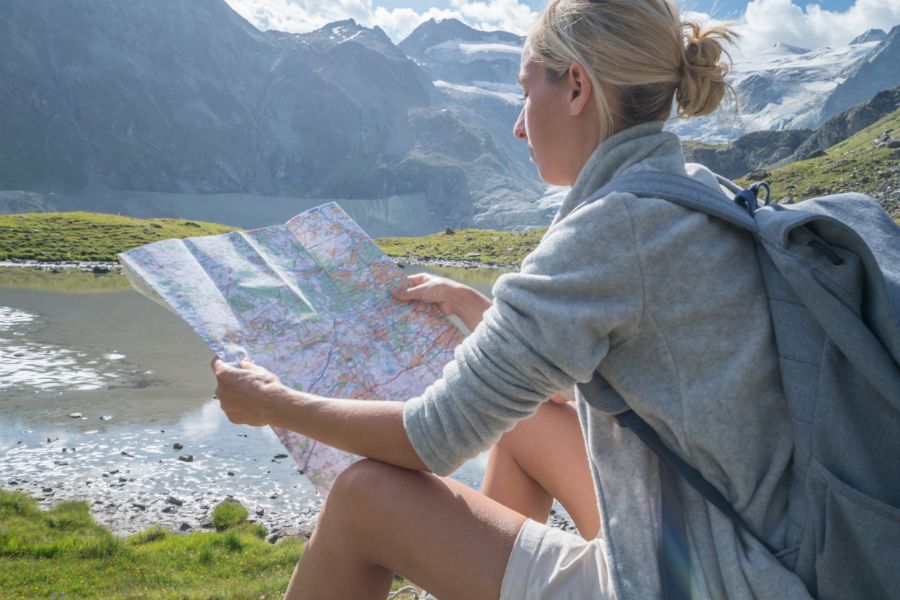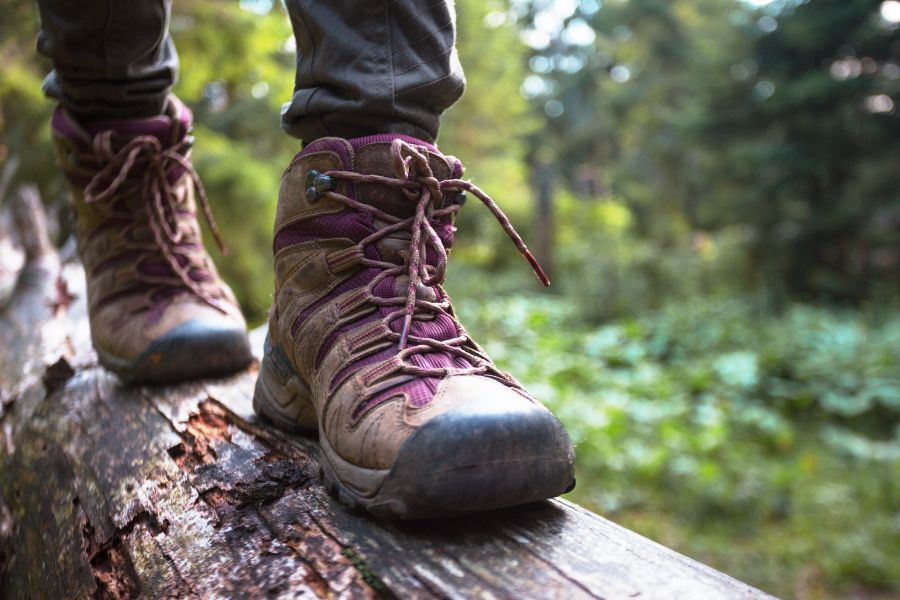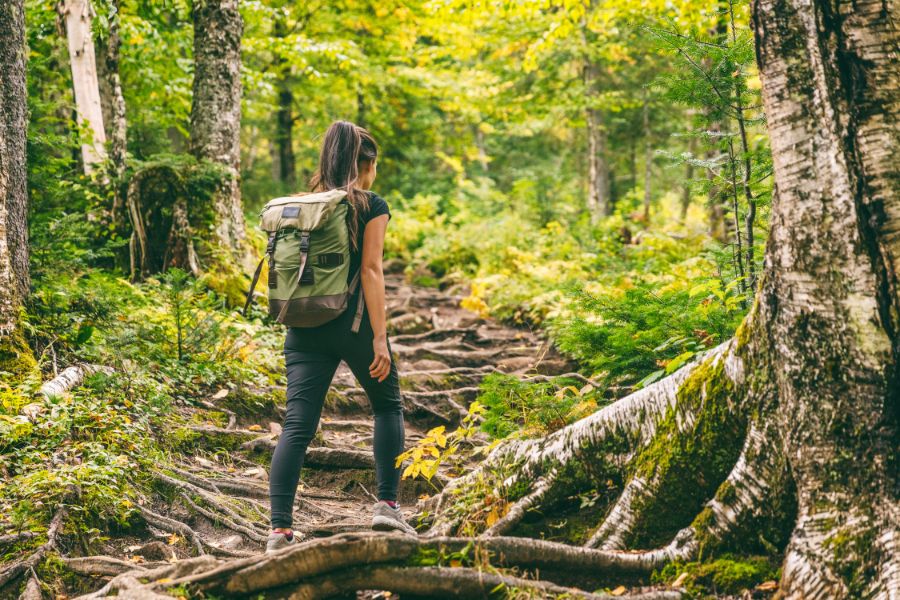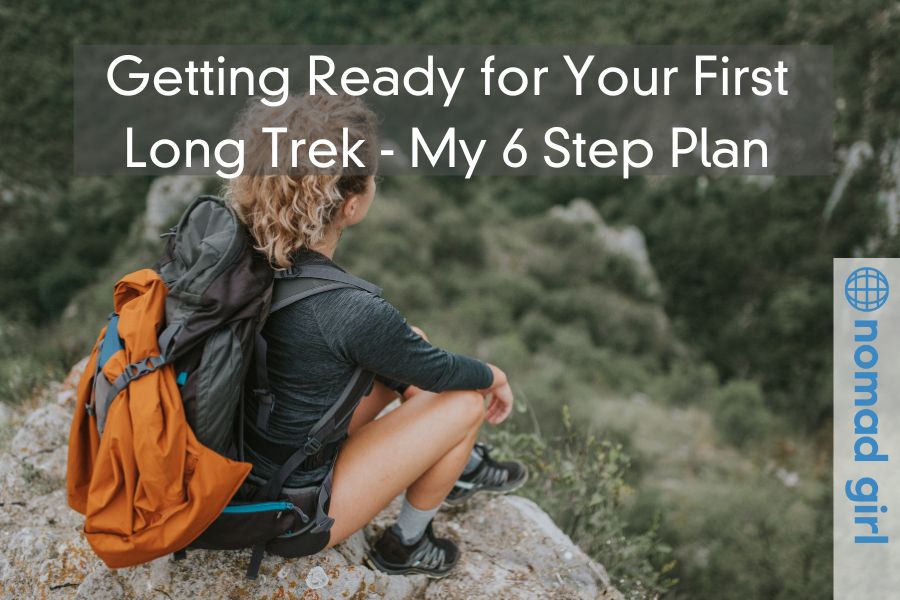As someone who spent most of her life reading books and the rest of it writing, a task that is as physically strenuous as a multi-day trek felt very alien to me. However, I was turning 25, I had accomplished many things academically and professionally, and I just wanted to do something so daring as a way of proving to myself that I could do more than write a good email pitch to a client.
“You need special shoes for trekking, and a bit of a special soul as well” – I remember my first long trek like it was yesterday.
I wanted to go big or go home, so my first long trek was among the Himalayan Mountains in Nepal. I was surprisingly very confident about it, even though I always take the elevator even to go to the second floor in my office.
“Ah, trekking. It’s just a fancy word for walking”, I told people. “There’s a long road and you just walk. How bad can it get?” Oh boy, was I wrong!
It was the most exhausting and the most extremely physically strenuous thing I had ever done in my life. One weary step after another and another and another along the wilderness of the Annapurna conservation area. I was humbled. I was pulled back to the earth. I started listening to my body, and I was amazed at the lengths to which I push myself and my body when needed. I made it!
So for the beginners getting ready for your very first trek, let me give you some words of wisdom and a few practical tips that I found out from my personal experience. Here is my 6 stap plan
1. Do your training!
Once upon a time, there was a first-time trekker who didn’t do any training before her first long trek because “it’s just walking”, and she was half dead with straining muscles by the end of her first day. She did the whole trek in terrible agony just because she didn’t take time to warm up her body for the strenuous physical exercise of trekking. She has my first and last name and she’s writing this article right now!
So, for the love of mighty Everest, start your trekking training as early as possible. Do your stretches, cardio, and strength training. Do it enthusiastically and do it well. The more you train beforehand, the more you can enjoy your trek rather than panting every 5 minutes.
2. Study your trail, itinerary and the map

The more informed about your trail you are, the better your experience will be. Take your time to study as much as you can about the trail you are about to trek. Read the experiences of previous travellers, try to understand the geography, the communities you meet, the culture and lifestyle of the people around the area. Try and be as familiar as possible with the trail. Read the map and try to memorize the places you will pass. Look at the pictures. Do all your homework before you step on the trail, and you will have 100 times more fun than someone who came and started walking.
Experienced hikers can tell you how the only way to make a Mont Blanc expedition safe and enjoyable is by preparing thoroughly and respecting the mountain’s unpredictability. That includes everything from checking the weather forecast to packing proper gear and understanding altitude effects
3. Choose your shoes

Your shoes can make or break a trek. Be very careful when you are selecting your hiking/trekking shoes. They should not be too tight or too loose. They should snug the curves of your soles comfortably, and make you walk comfortably as if you are not wearing any shoes at all. Trekking requires making your way through jungles, uneven lands, water, rocks and even snow sometimes. Your legs are what makes it possible for you to trek, and your shoes are what makes it possible for your legs to trek.
You need to break in your shoes way before your trek. Blisters can kill a trek and you do not have time for it as you enjoy your first-ever trekking adventure. Wear the socks that you hope to wear with the shoes and break in the shoes at least a couple weeks before you start your trek.
Trekking can be expensive and sometimes you have gone for cheaper things. However, your shoes are one of the most important things that you should not cut the corners in. Go for the best quality shoe that you could afford, and it will take you to many magical places as you trek around the world!
4. Get used to your backpack

Your backpack is your closest friend which will have all your belongings, water, food and every necessity for you to survive your trek. However, too many trekkers start feeling that their backpack is the enemy for them due to having to carry it always with them. Therefore, you need to get familiar with it before the trek. You will have to walk many miles wearing the backpack. Do some practice walks with the same amount of weight in the backpack. Try to get used to the feeling of the backpack on you, and forget the added weight that comes with it.
Your trekking backpack should have adjustable straps for your chest and waist to reduce the strain on your shoulders. If you cannot fix them properly alone, get the help of a friend to tighten them well around your waist and chest so the weight of the backpack spreads along your upper body and the hips.
5. Train your energy levels
You do not get to eat 3 full meals a day when you are trekking. Due to the lack of facilities, you get as you go far along the trail of a trek, trekkers eat only light food and snacks at frequent intervals to keep their energy levels high. Try adding snacks and dried lean proteins such as beef jerky to your meal a few days before your trek begins.
This will help your body to get used to it. If you do not train beforehand, it might be difficult for you to trek on an almost empty stomach for many hours a day. Try to keep your trekking meals as healthy as possible as well. Dried fruit, meats and nuts are usually the most common snacks among trekkers.
6. Grow a positive mindset
When it comes to trekking, half the work that you do to finally get to the summit or the final destinations that you aim to go to is in your mind. You are pushing your body to go way beyond what you do in your day-to-day life. There will surely be times that you feel so physically exhausted during your trek that you just feel like giving up. This is where your mind comes in. Your mind has to be extremely strong and calm. If you ever face an unexpected problem during the trek, your mind should be clear and sharp enough to make the best decisions possible.
Before you start your trek, try to do some meditation or mindfulness practices. The focus and being aware of the present moment is one of the most important things you should practice during a trek. You need to constantly push yourself to put one step after the other when your body screams that you just cannot go one more step, that is when your mind should take the lead and help your body to reach your final goal.


















